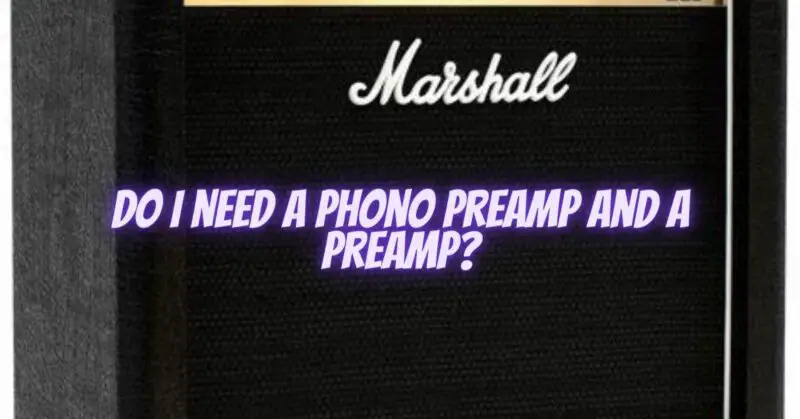When setting up a turntable and audio system, the question may arise whether you need both a phono preamp and a preamp. While they sound similar, these two components serve distinct purposes in the audio chain. In this article, we will explore the roles of a phono preamp and a preamp, helping you understand whether both are necessary for your setup and how they work together to achieve optimal audio performance.
Understanding the Roles:
- Phono Preamp: A phono preamp, also known as a phono stage or phono equalizer, is specifically designed to process the low-level audio signal produced by a turntable’s cartridge. It performs three key functions: RIAA equalization, amplification, and impedance matching. RIAA equalization restores the frequency balance of the original recording, amplification boosts the weak cartridge signal to line level, and impedance matching ensures optimal signal transfer. A phono preamp is essential for accurate playback of vinyl records.
- Preamp (Line-Level Preamp): A preamp, or line-level preamp, operates at a higher signal level and serves as an intermediary between the source components (e.g., CD player, tuner, streaming device) and the power amplifier. Its primary role is to amplify and control the incoming audio signal to a level suitable for the power amplifier to further amplify and drive the speakers. A preamp helps shape the overall audio quality, providing volume control, tone adjustment, and sometimes additional features such as source selection and headphone outputs.
Determining the Need: To determine whether you need both a phono preamp and a preamp, consider the following factors:
- Turntable Output: Check if your turntable has a built-in phono preamp. Many modern turntables, especially entry-level models, include a phono preamp to simplify the setup. If your turntable has a “line” or “phono/line” output, it likely has a built-in phono preamp, eliminating the need for an external one. In this case, you may connect the turntable directly to the preamp.
- Audio System Setup: Examine your audio system setup. If your receiver or amplifier has a dedicated phono input, it already includes a built-in phono preamp. In this scenario, connecting your turntable directly to the phono input bypasses the need for an external phono preamp. However, if your audio system lacks a phono input, you will need a separate phono preamp to connect the turntable to a line-level input on the preamp.
- Desired Audio Control and Flexibility: Consider your audio preferences and desired control over the sound. A preamp provides volume control, tone adjustments, and additional features that enhance your audio experience. If you value the ability to fine-tune the sound and control various audio sources, a preamp becomes essential in your setup, regardless of whether your turntable has a built-in phono preamp.
Conclusion: Whether you need both a phono preamp and a preamp depends on your specific setup and audio preferences. If your turntable has a built-in phono preamp or your audio system has a dedicated phono input, you may not require an external phono preamp. However, if your turntable lacks a built-in phono preamp or your audio system lacks a dedicated phono input, a separate phono preamp is necessary. Additionally, a preamp is beneficial for overall audio control and flexibility. Assess your equipment and desired audio setup to determine the appropriate combination of preamps for your needs, ensuring optimal audio performance and an enjoyable listening experience.


